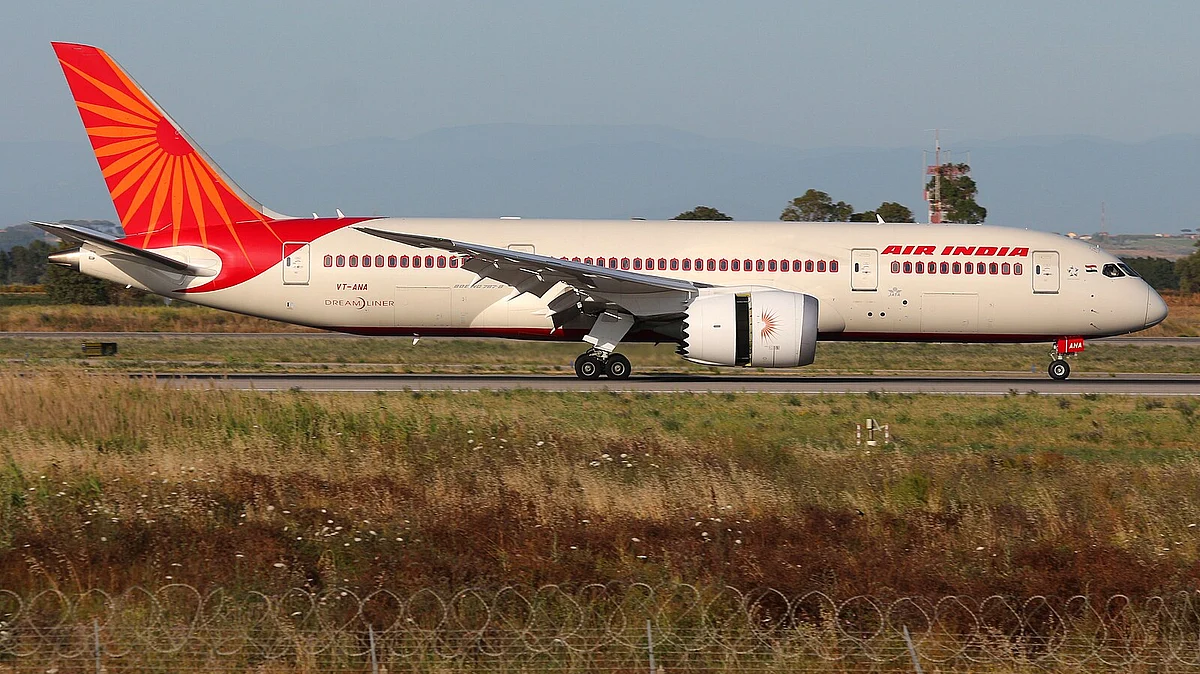
Air India Crash: How Safe is Boeing's 787 Dreamliner? What Will Probe Focus on?
When you investigate air crashes, they often involve a chain of problems, explains an aviation expert.

advertisement
An Air India plane bound for London Gatwick airport crashed shortly after take-off on 12 January in Ahmedabad, Gujarat. Flight AI171 was carrying 242 people, including 169 Indian nationals, 53 British nationals, seven Portuguese, and one Canadian.
Professor Ali Elham, from the University of Southampton’s Department of Aeronautics and Astronautics, answers all the pressing questions about the plane involved in the crash—Boeing’s 787 Dreamliner—which has come under scanner post the disaster. What is the Dreamliner’s safety record like? What will the crash investigation focus on? Read on for more.
How Does Boeing’s 787 Dreamliner Differ from Other Passenger Planes?
The Dreamliner was a huge breakthrough in aircraft design. For example, it was the first Boeing aircraft with more than 50 percent composite material in its structure. In this case, composite material refers mainly to carbon fibre. This carbon fibre was replacing parts of the structure that would have been made from aluminium in previous types of aircraft. This contributed to a huge reduction in aircraft weight.
The combination of new engines, improved aerodynamics, and significant weight reduction—largely due to the use of composite materials—resulted in notable reductions in both fuel consumption and carbon emissions compared to previous-generation aircraft. Another feature was the greatly increased electrification of the plane, with more use of batteries for onboard power systems.
What is the Dreamliner’s Safety Record Like?
The Dreamliner has a very good safety record and has been flying for many years without significant problems. But when the plane was new, in 2013 or so, there were a few incidents in which the aircraft’s lithium-ion batteries overheated, in some cases resulting in smoke or even catching fire, both on the ground and during flight.
Boeing intensively investigated the problem. They redesigned the batteries, they redesigned the battery containers and then they ran tests and an extensive certification process that allowed them to return the Dreamliners to flight. Since then, there have been no incidents with batteries as far as I am aware.
Batteries were used instead of getting power from the gas turbines in the engines. The power is used for instruments, for electronics and many other aircraft systems. Increased electrification – getting more of the aircraft’s power from batteries – contributes to reducing carbon emissions, because the gas turbines run on kerosene.
Do any Details Currently Known About the Crash Narrow Down the Search for the Cause?
It’s too early to say anything about the cause of the crash, and as far as I’m aware no official details have been released about the cause.
This crash occurred shortly after take-off. While flying is statistically the safest form of transport, the takeoff and landing phases are generally considered the most critical. This is because aircraft operate closer to the ground, with less time and altitude to respond to technical issues or sudden changes. Although not inherently dangerous, these phases carry a higher risk of incidents compared to cruising at altitude.
What Will the Crash Investigation Focus on?
They will investigate everything. They will search for the data recorders (black boxes), which are designed to survive a crash. If these are recovered, investigators will be able to view all the flight data, hear all the cockpit conversations. They will take all the information from the control tower. Sometimes clues can be found from all this data. They will also examine the wreckage of the aircraft in detail.
It’s a different situation from the Boeing 737 Max groundings, which followed two crashes linked to a specific and repeatable software flaw.
In the current case, unless investigators identify a recurring technical problem that poses an immediate risk to other 787s, a fleet-wide grounding would be unlikely. Safety is always the top priority, but regulatory responses typically depend on whether an issue appears to be isolated or part of a broader pattern.
It must be said that the 787 Dreamliner has a very good safety record. It had a very long certification period with the Federal Aviation Administration in the US.
(In this piece, Professor Ali Elham from the University of Southampton’s Department of Aeronautics and Astronautics, speaks to The Conversation’s Paul Rincon. This article is republished from The Conversation under a Creative Commons license. Read the original article.)
- Access to all paywalled content on site
- Ad-free experience across The Quint
- Early previews of our Special Projects
Published: undefined